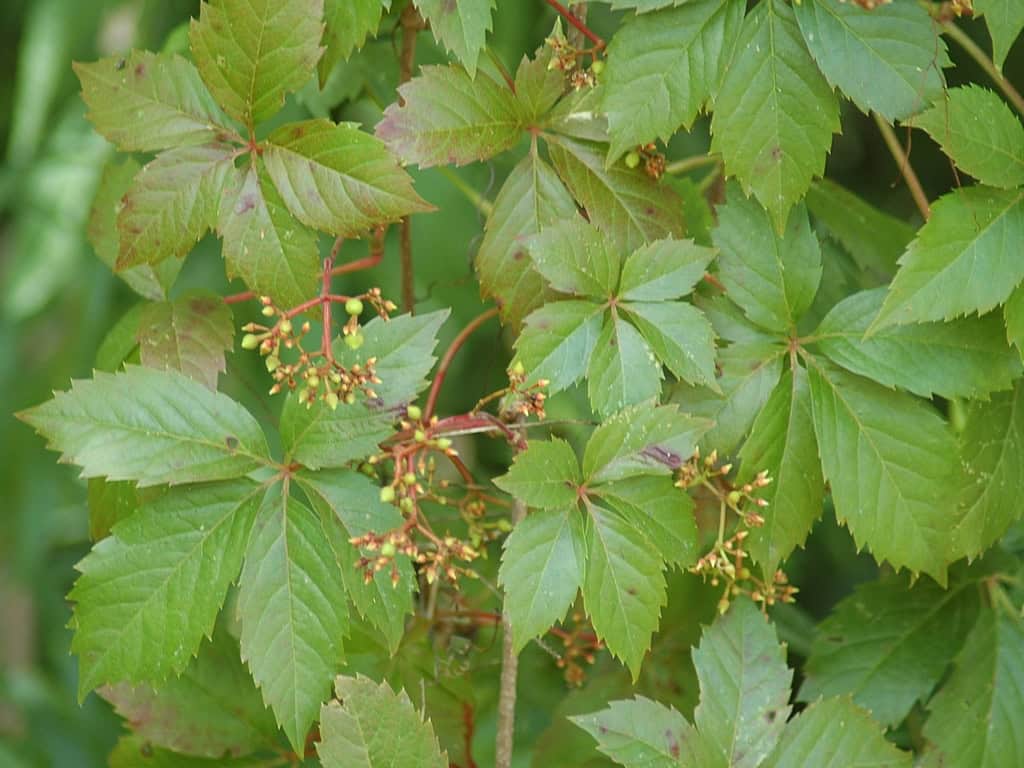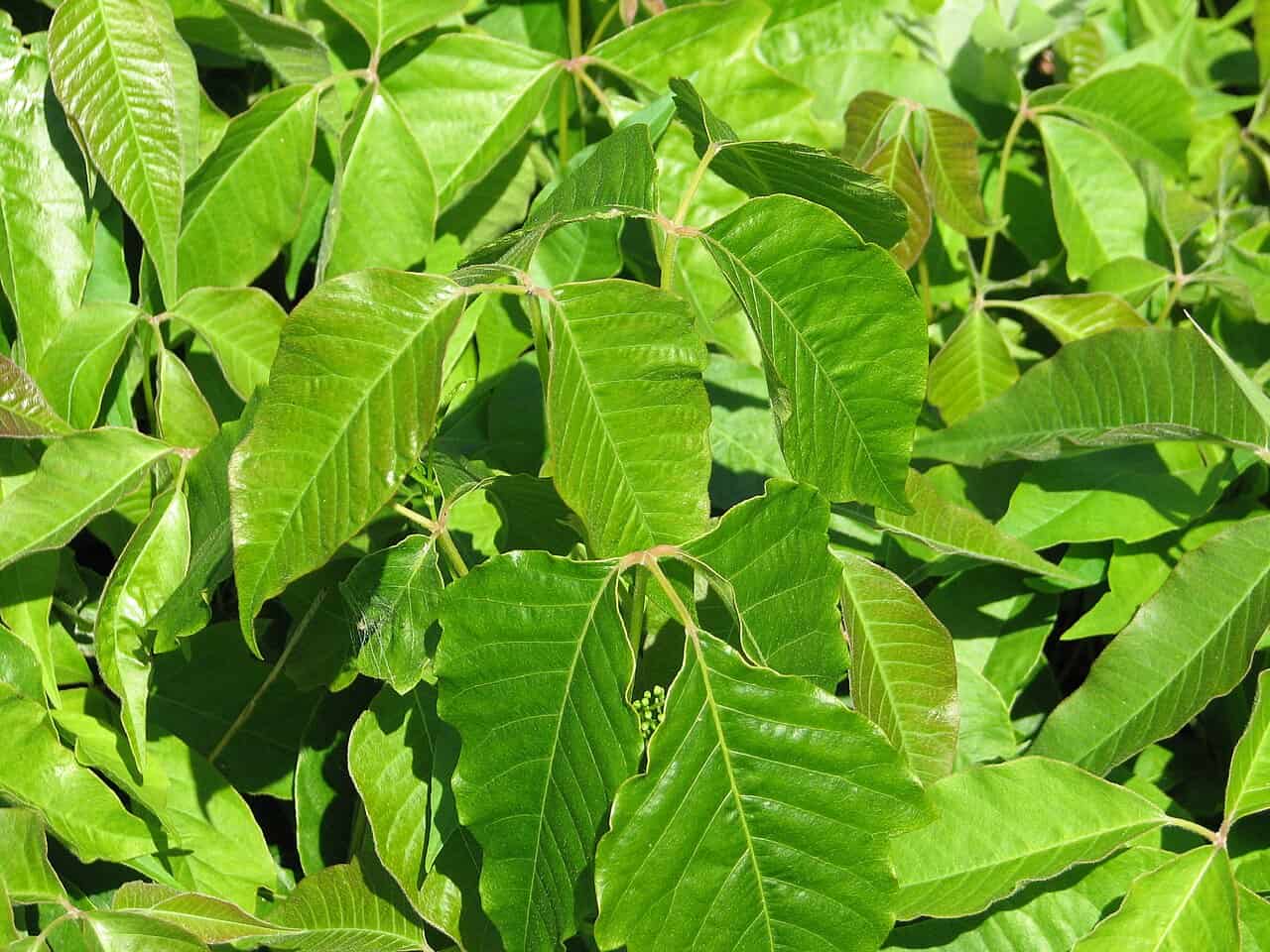Leaves Of Three Or Leaves Of Five?
June 10, 2024
Virginia creeper vine climbs up a standing dead tree.
Both Virginia creeper (Parthenocissus quinquefolia) and eastern poison ivy (Toxicodendron radicans) are native vines that benefit insects, birds, and other wildlife. However, the latter tends to produce an allergic response in most people and isn’t recommended for spaces where you are likely to come into contact with it.
Let’s take a closer look so we can tell them apart.

Photo from Wikipedia
Virginia creeper has five leaflets (“Leaves of five, let it thrive”) that are “toothed” or jagged at the edges. The sap produced by the leaves and stem contain raphides, needle-shaped calcium oxalate crystals, which can cause skin irritation in some people who are sensitive to it. However, the plant doesn’t produce urushiol like poison ivy does. Leaves turn crimson in the fall.
The vine adheres to vertical surfaces with adhesive pads and will not damage masonry walls.
Berries produced in the fall are consumed by woodpeckers, warblers, mockingbirds, and more. What’s more, Virginia creeper is a host plant for dozens of native insects including the Virginia Creeper Sphinx Moth.
Eastern poison ivy is actually not a true ivy, despite its name. It will vigorously climb trees by rootlets; both the leaves and furry roots of the plants contain urashiol, a clear liquid that produces an itchy rash in people who are allergic to it.

Photo from Wikipedia
Poison ivy has three leaflets (“Leaves of three, let it be”) that are not “toothed.” Like Virginia creeper, the leaves turn red in autumn.
Though considered a nuisance to most, poison ivy feeds myriad birds and other wildlife, who are not bothered by urashiol. Norther Flicker, Northern bobwhite, Eastern Phoebe, Cedar Waxwing, woodpeckers, and more consume the berries in fall and winter.
next post
Got Kestrels?
June 7, 2024
By Daniel Barringer, Preserve Manager. We are so very excited to announce the arrival of some babies at Crow’s Nest! For the first time in […]
continue reading